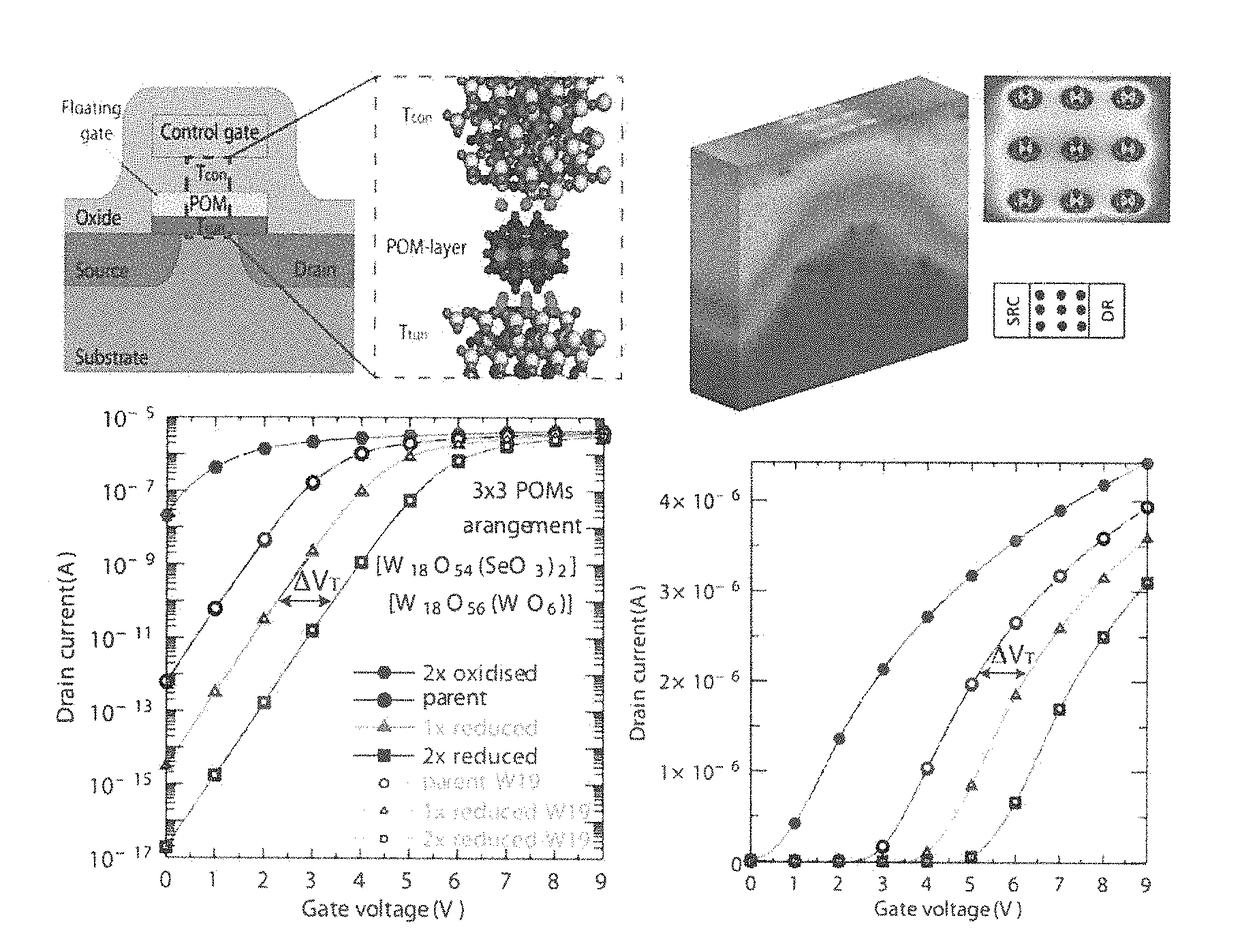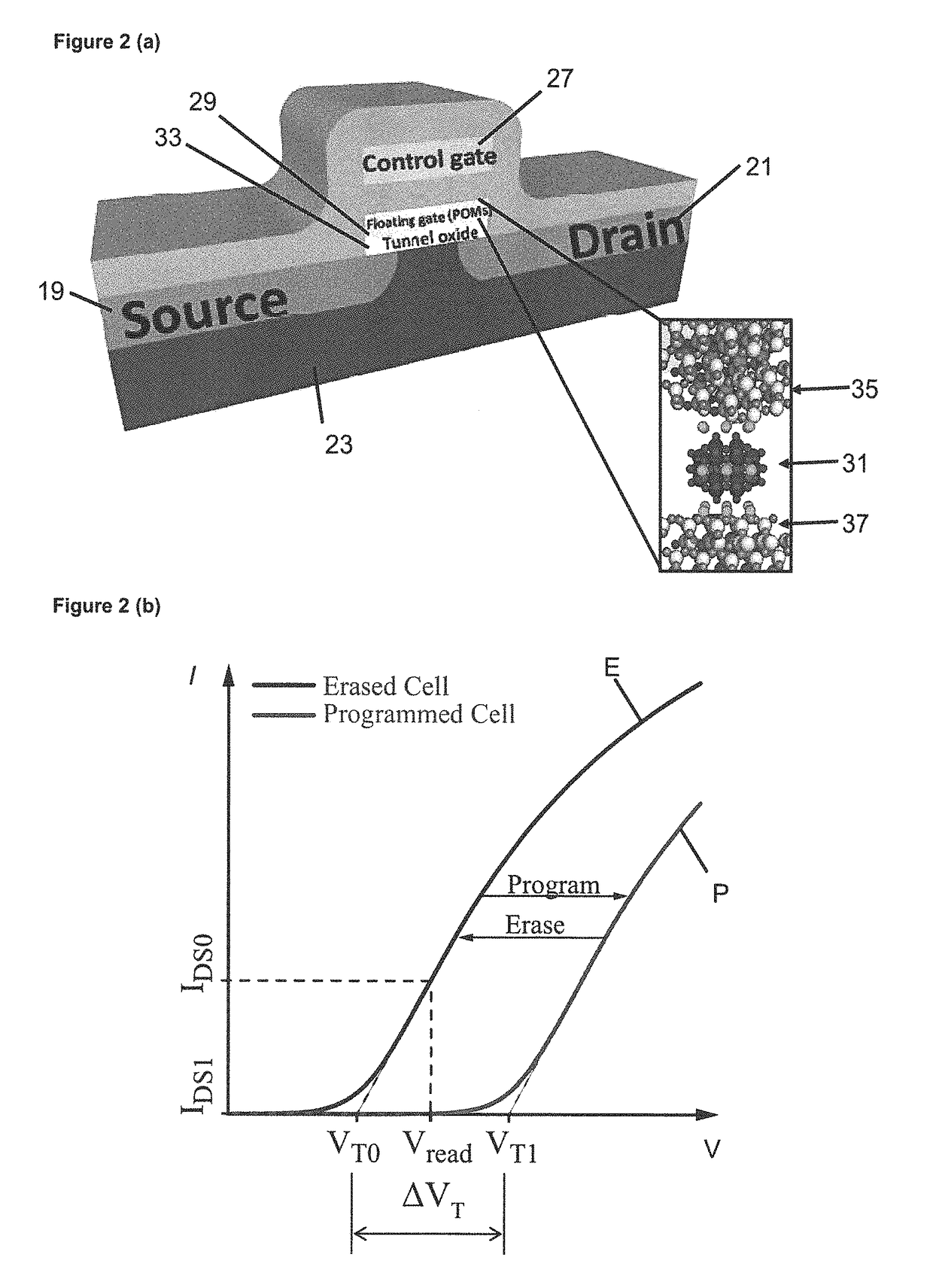Memory device
a memory device and memory technology, applied in the field of electronic devices, can solve the problems of high tunability and unsuitable purpose of electronic devices, and achieve the effects of high redox activity, improved electronic complementarity, and high tunability
- Summary
- Abstract
- Description
- Claims
- Application Information
AI Technical Summary
Benefits of technology
Problems solved by technology
Method used
Image
Examples
Embodiment Construction
[0071]The present inventors realised that having molecular charge storage memory solutions compatible with standard silicon flash manufacturing would be advantageous, and that these solutions would ideally be suitable for both single- and multi-level devices, while overcoming one or more of the above-described deficiencies within present devices.
[0072]In general, transition metal oxides exhibit a rich collection of electronic properties and have many practical applications in areas such as catalysis and ultra-high-density magnetic data storage. Therefore, the present inventors consider that the development of switchable molecular transition metal oxides has potential for the engineering of single-molecule devices and nano-scale electronics. The electronic properties of transition metal oxides can be tailored through the irreversible introduction of dopant ions, modifying the electronic structure by either injecting electrons or core holes. The present inventors have previously consi...
PUM
 Login to View More
Login to View More Abstract
Description
Claims
Application Information
 Login to View More
Login to View More - R&D
- Intellectual Property
- Life Sciences
- Materials
- Tech Scout
- Unparalleled Data Quality
- Higher Quality Content
- 60% Fewer Hallucinations
Browse by: Latest US Patents, China's latest patents, Technical Efficacy Thesaurus, Application Domain, Technology Topic, Popular Technical Reports.
© 2025 PatSnap. All rights reserved.Legal|Privacy policy|Modern Slavery Act Transparency Statement|Sitemap|About US| Contact US: help@patsnap.com



